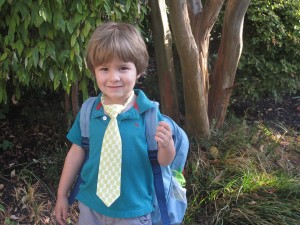The Negative Health Effects of Heavy Backpacks, And How Your Kids Can Avoid Them
This article originally appeared on The Active Times by Katie Rosenbrock.
Back to school means back to the books, which is great for kids’ brains, but not so much for their backs.
According to the American Academy of Pediatrics (AAP), a child’s backpack shouldn’t weigh more than 10 to 20 percent of their weight, but often this limit is exceeded, and it could certainly lead to strain and even injury.
There are several research studies showing the long-term effects of carrying a heavy backpack.
Wearing a heavy backpack for prolonged periods may cause excessive strain in one’s neck, back and shoulders. Over time, muscles may fatigue, and the wearer may fall into poor posture, which may lead to muscle imbalances, which, if long-term, may cause increased risk of injury.
Additionally, children who wear heavy backpacks have a tendency to lean forward to support the weight, which further implicates their posture. Plus, for small children, heavy backpacks increase their risk of falling.
Clearly there are a handful of risks involved with bearing the brunt of a backpack that’s just too heavy for a kid to handle, yet a 2002 study out of Texas found that most parents (about 96 percent) don’t inspect the weight of their kid’s backpacks.
Determining an Appropriate Backpack Weight and Avoiding Back Pain
The AAP recommends a child’s backpack weigh no more than 10 to 20 percent of their body weight, but according to The New York Times, a recent survey from Consumer Reports suggests aiming for the lower, 10-percent end of that spectrum. Quinn agrees.
Also worth noting, that same report found girls and shorter children may be most at risk for back pain resulting from heavy backpacks, so for smaller-statured kids, it’s especially important to find a backpack that fits well.
It’s important to make sure the straps are wide, padded and adjustable, so the backpack fits the child well
The backpack should be close to the body and should not hang too far below the waist. The best advice for older kids is to wear the straps on both shoulders and evenly distribute the items in the backpack.”
The risk for injury increases, Quinn explains, when the backpack is worn over one shoulder or when most of the items are packed to one side, which often causes the carrier to shift or bend to the side to bear the weight.
She emphasized the importance of carrying the backpack with both straps to distribute the weight evenly over both shoulders.
Removing unnecessary items from the backpack daily is also key..
Relieving Neck and Shoulder Strain
Prevention is of utmost importance, but for kids who are already experiencing strain in their necks, shoulders and backs due to a heavy backpack, Quinn offers a few restorative stretches and exercises that may help.
“Heavy backpacks may cause the wearer to bend forward, causing increased strain on the lower back,” she explains. “It may cause a forward head and rounded shoulder posture, which may result in tight pectoralis muscles and excessive strain on the cervical spine (neck). Pec and upper-trap stretches may improve the flexibility of these muscles and prevent long-term postural deficits.”
As chiropractors we cannot stress how important it is that back packs are worn correctly, as well as carried correctly. We can always check that your child pack is correct for them if you bring them into the office. Let’s catch problems before they develop. Dr C

No comments yet.